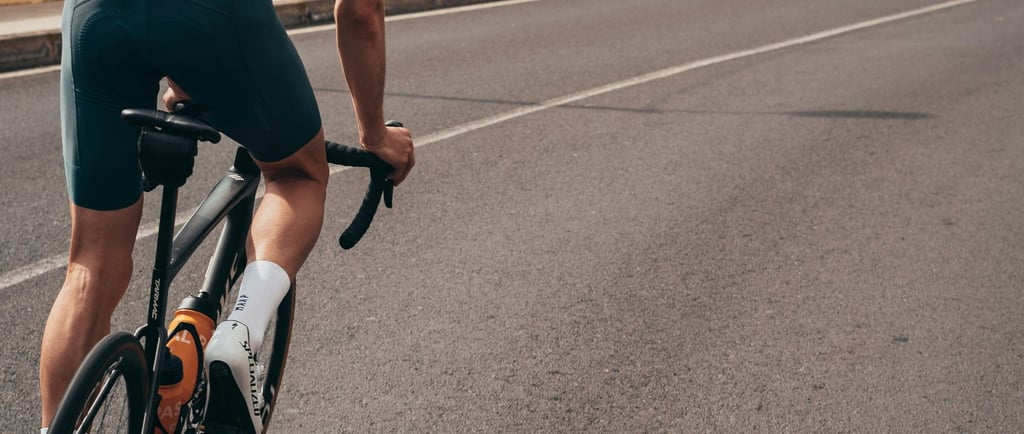Zone Training Explained: How to Train with Heart & Power Rate
TRAINING
7/30/2025


What Is Zone Training — and Why Does It Matter?
Zone training is a method of organizing your training intensity into specific “zones,” each targeting a particular adaptation in your body. Rather than riding aimlessly, you train with purpose — whether it’s building base endurance, increasing your threshold or improving your sprint.
Think of it like gears for your fitness: each zone serves a different but crucial function in making you a better rider.
Heart Rate Zones Explained
Heart rate zones are typically calculated using your maximum heart rate or lactate threshold. Most systems use five or six zones, each representing a different intensity level and physiological effect.
Zone Overview:
Zone 1: Active Recovery — Very easy effort, used for rest and recovery rides.
Zone 2: Endurance — Easy, steady riding that builds your aerobic base.
Zone 3: Tempo — Moderate intensity; good for long efforts that improve muscular endurance.
Zone 4: Threshold — Hard effort around your lactate threshold; boosts your ability to ride faster for longer.
Zone 5: VO2 Max — Very hard efforts to improve aerobic power and lung capacity.
Zone 6 (optional): Anaerobic — Maximal sprinting for explosive power.
Power Zones Explained
Power zones are based on your Functional Threshold Power (FTP) — the highest average power you can sustain for about one hour. They’re highly specific and accurate, especially for interval-based training.
Zone Overview:
Zone 1: Recovery — Less than 55% of FTP; used for active recovery
Zone 2: Endurance — 56–75% of FTP; long, steady efforts to build aerobic fitness
Zone 3: Tempo — 76–90% of FTP; great for improving muscular endurance
Zone 4: Threshold — 91–105% of FTP; targets your lactate threshold
Zone 5: VO2 Max — 106–120% of FTP; high-intensity intervals to boost aerobic capacity
Zone 6: Anaerobic Capacity — 121–150% of FTP; short, explosive efforts
Zone 7: Neuromuscular Power — Max effort sprints lasting a few seconds
How to Use Each Zone in Training
A well-rounded training plan includes a strategic mix of zones. Here are a few practical guidelines:
Use Zone 1 for recovery rides after hard workouts or races.
Use Zone 2 during base-building periods and long rides.
Use Zone 3–4 for tempo rides and sweet spot sessions — these improve endurance and threshold.
Use Zone 5–6 for structured interval training to build speed and VO2 max.
Bonus Tip:Avoid spending too much time in Zone 3 “gray area” — it’s hard enough to tire you out, but not hard enough to bring big gains.
Heart Rate vs. Power: Which Is Better?
Both tools are valuable — and each has its strengths.
Use heart rate if you:
Are just starting out
Want to monitor fatigue and effort
Use power if you:
Want precise, performance-driven training
Are focused on intervals and race-specific efforts
Have access to a power meter
Best case? Use both. Power shows you the work you’re doing. Heart rate tells you how your body is responding. Together, they offer a complete picture of training effectiveness and fatigue management.
Start doing Zone Training
Zone training isn’t just for pros. Whether you're riding for fun or competition, using heart rate or power zones helps you get more out of every pedal stroke. It makes your training smarter, more efficient and more targeted toward real performance gains.
So — find your FTP or max heart rate, set your zones and start chasing your goal.
Socials
© 2025. All rights reserved.
